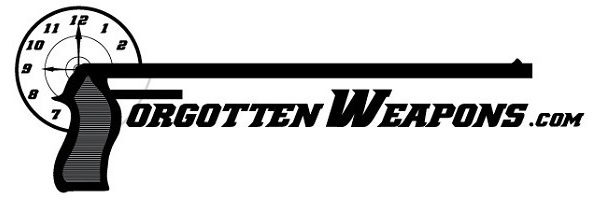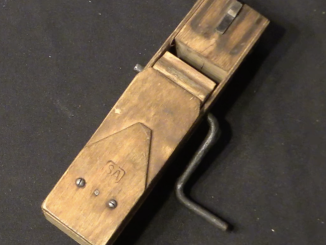Today’s Q&A is brought to you by the fine folks at Patreon! Join us to help support Forgotten Weapons and to submit your questions for future Q&A videos:
http://www.patreon.com/ForgottenWeapons
I figured that Finland would be a good subject for this month’s Q&A, as I am visiting the country to shoot Finnish Brutality this month. In fact, this video was filmed during the trip (the match took place last weekend, and its video coverage will be coming soon!).
00:39 – Development of the Suomi and PPSh-41 submachine guns
03:24 – Oldest guns used in Finnish Independence War
04:40 – Biggest strength and weakness of the Suomi
06:43 – Soviet use of captured Suomis?
08:52 – Finnish Maxim guns
11:41 – Finnish alcohol
17:05 – Finnish small arms that could have been globally popular but weren’t?
20:04 – Benefits of a small invaded country using the same weapons as its invader?
23:07 – Favorite and least favorite Finnish customs?
25:57 – “Finnish Mosin Nagant” book by Matt DiRisio
27:26 – “Sisu” movie
28:28 – Are the Finns masters of improving other peoples’ guns?
30:08 – Pre-independence Finnish arms production
31:47: Shower beer or sauna beer?
32:20 – Why so few RK95 rifles made, and RK95 vs RK62M?
35:35 – Swedish Mausers in Finland
37:54 – Commercial Sako rifles before and after Beretta bought Sako
39:19 – Finnish gun laws, specifically CCW
40:58 – Interlude: Finnish Brutality 2025 match update w/ Jari Laine
42:24 – Did Finland improve the PKM and SVD like they did the AK and Mosin?
44:57 – 7.62x54R vs 7.62x53R
47:56 – Thoughts on new Sako AR for Swedish and Finnish militaries



“(…)Soviet use of captured Suomis?(…)”
Not strictly captured, but Soviet copy (for 7,62×25 cartridge) was manufactured, see 7th image from top in https://kareliamuseum.ru/vystavki/357/
“(…)Finnish small arms that could have been globally popular but weren’t?(…)”
I bet Pelo (konepistooli) https://guns.fandom.com/wiki/Pelo_submachine_gun might score some foreign sales. It was abandoned before fully developed, due to decision to go intermediate-cartridge path. Lack of detachable magazine might appeal to customers who have bad experienced (like finding issues with interchangeability), whilst hinged magazine (akin to MAT-49) might appeal to customers desiring way to carry it under cover.
That’s true. Finns do not talk for the sake of making noise.
Johannes met Olavi, his good old friend and asked him for a drink. Olavi obliged.
They finished the first bottle of vodka, in silence.
Then the second one came, in an equally verbally reserved atmosphere.
Johannes thus opens the third one.
– So how are you, Olavi?
– Hmmm…. Did we come here to drink or to talk?
Good set of questions, overall. Always enjoy these, whenever Ian does them.
I would quibble, however, over the way Ian does his math regarding sharing calibers with a potential enemy.
I would put it that it is far from essentially immaterial, as I take Ian’s overall take on the issue. I’d go far in the other direction, and say that it’s a very important thing, and a consideration that should be made based on the actual strategic/operational situation that a nation anticipates.
For the Finns, matching the Russian/Soviet small arms system made excellent sense: One, they took over an existing “installed base”, and they anticipated being the David facing Goliath. Odds were excellent that they’d be overrun, and then fighting another lengthy guerrilla war in the forests. Plus that, anything they captured under any circumstances would leverage their own supplies, and make it easier to integrate their war booty into their own system. Sticking with the Russian/Soviet standard only made good sense.
However, comma… Those considerations were and are only really true for the limited period addressed since Finnish independence up to today. Anywhere else, any other historical period? They don’t apply, and you’d be a fool to automatically apply them.
Going forward, the Finns did not type-standardize on the 5.45X39, so going to 5.56X45 NATO only makes sense, now that they’re part of the NATO alliance and taking part in their supply system. So, that change-over is likely coming, along with a probable move to a 7.62mm NATO PKM MG solution. I don’t think they’ll take up a MAG-58 or the other FN MG offerings which are too lightweight and fragile. My guess is that they’ll be going for the Polish PKM in 7.62 NATO or some other similar weapon.
This makes sense because they’re now part of an alliance, where before they were not; all the considerations they’d had before that fact was “real” are now inoperable; they no longer have the benefit of being able to use captured stocks (5.45X39, remember…?) and it’s basically pointless. So… NATO standardization, here we come.
Other nations had different considerations; those are still operable, and it’s entirely possible that some of the same considerations have shifted for them, such that running former Soviet standards might just make a certain sense for their needs vice converting to NATO or going their own idiosyncratic way.
Personally, were it not for the benefits of NATO unified logistics and technical support, I’d highly suggest avoiding the hell out of any alliance-based entanglements due to the idiocies of the senior member’s ordnance department. The US has been the 800-lb gorilla in the cartridge department for so long that it is really hard to avoid defaulting to their stupidity, but with NGSW…? I dunno. I hope someone has a sudden onset of common sense and acknowledges the horror show that cartridge/weapon combination really is. Before it gets forced down the throat of the alliance yet again…